Giochi dell'Oca e di percorso
(by Luigi Ciompi & Adrian Seville)
(by Luigi Ciompi & Adrian Seville)

|
Giochi dell'Oca e di percorso
(by Luigi Ciompi & Adrian Seville) |

|
 |

Torna alla ricerca giochi (back to game search) |
 |
| Jeu des Contes de Fées | ||
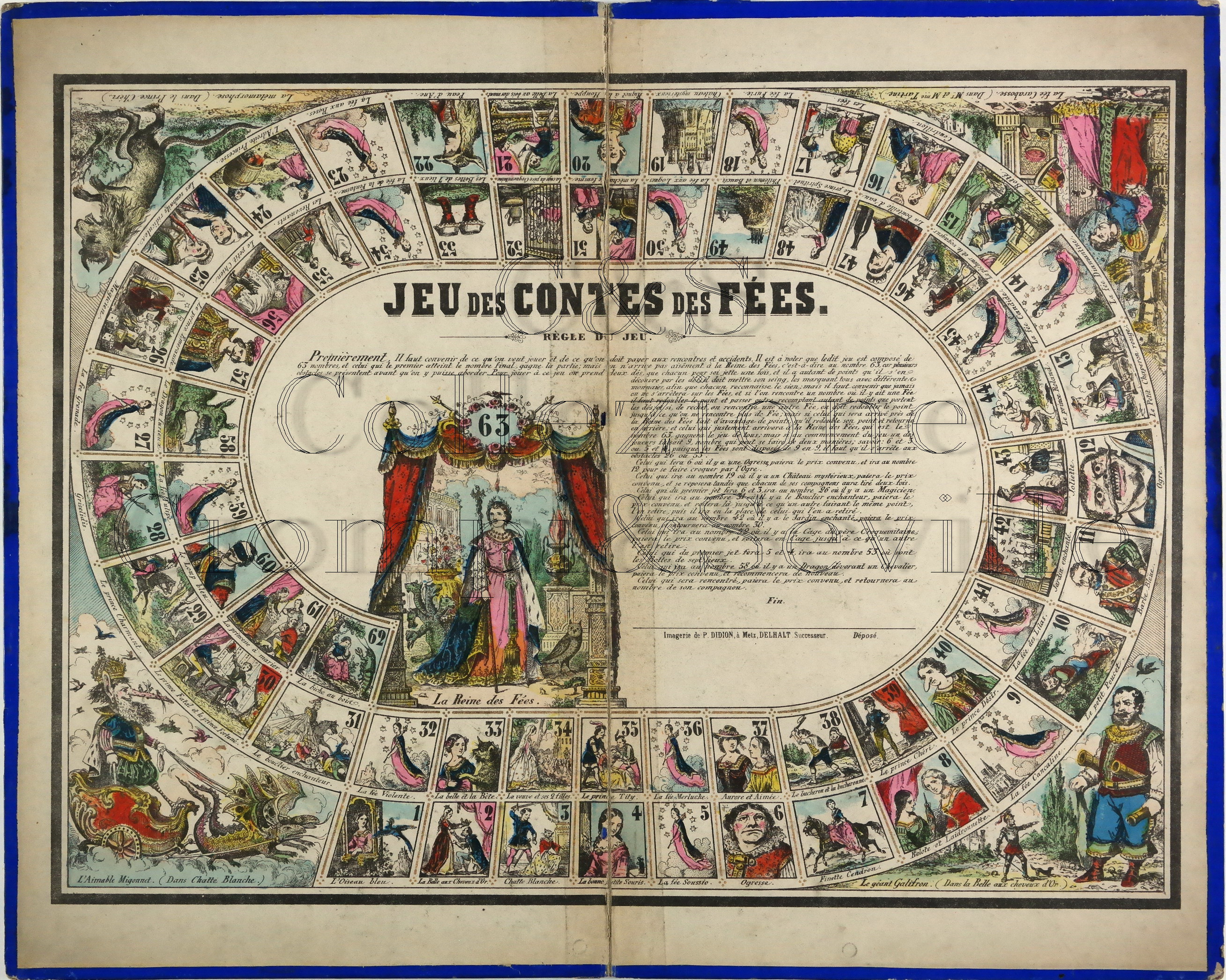 |
Versione stampabile
 |
Invia una segnalazione

|
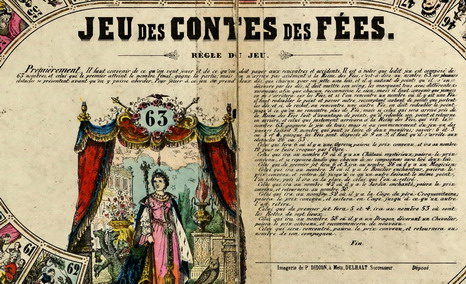 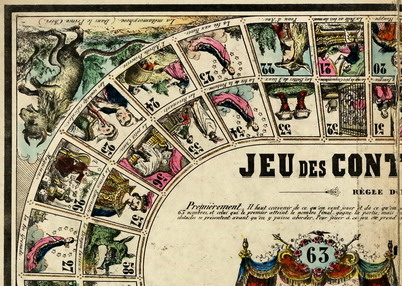 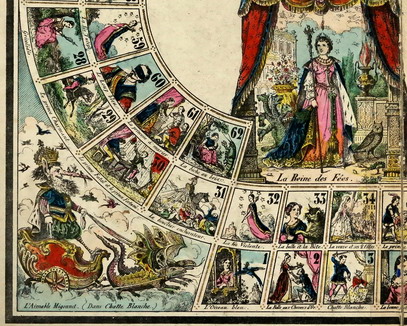 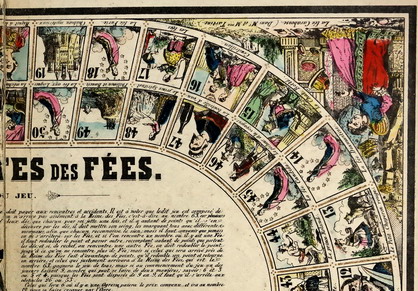 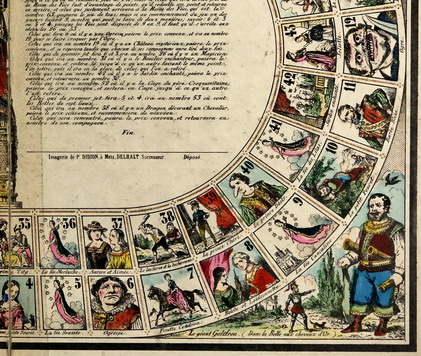 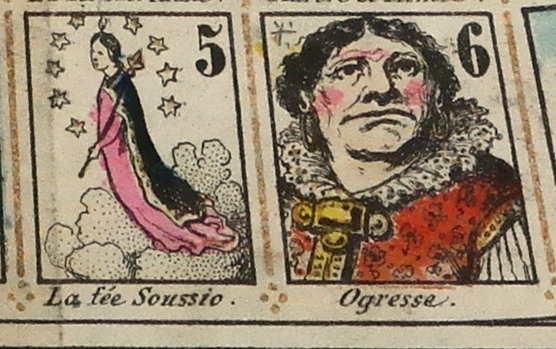 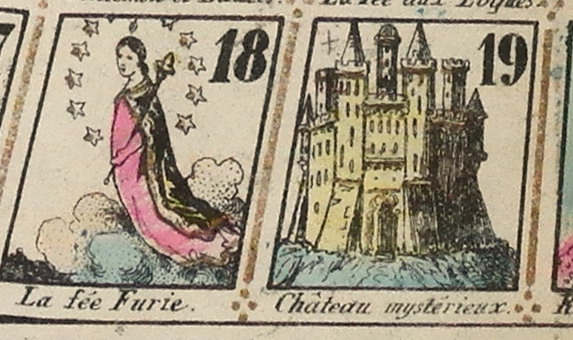 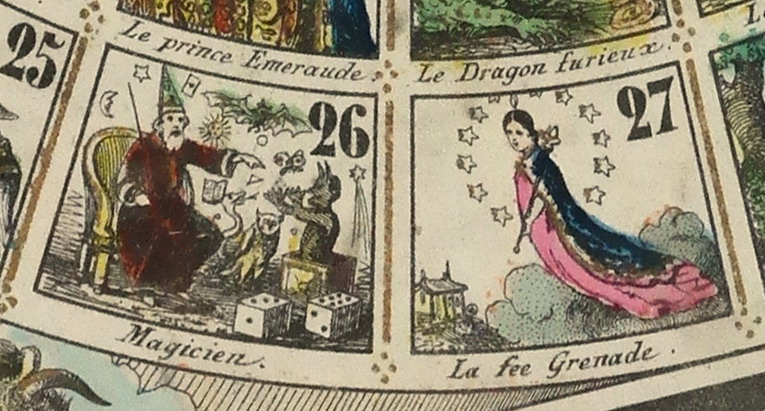 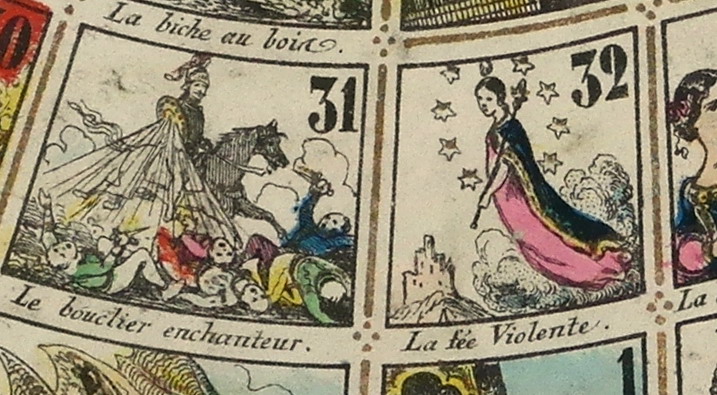 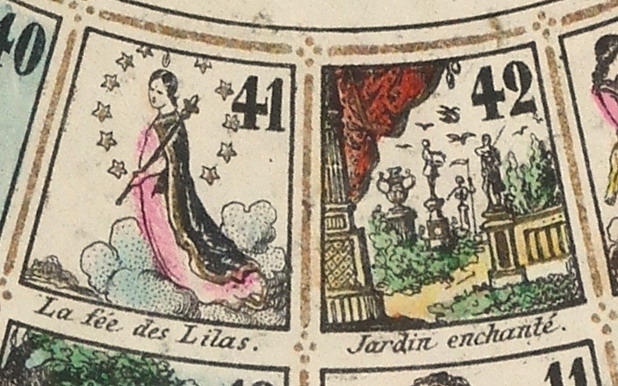 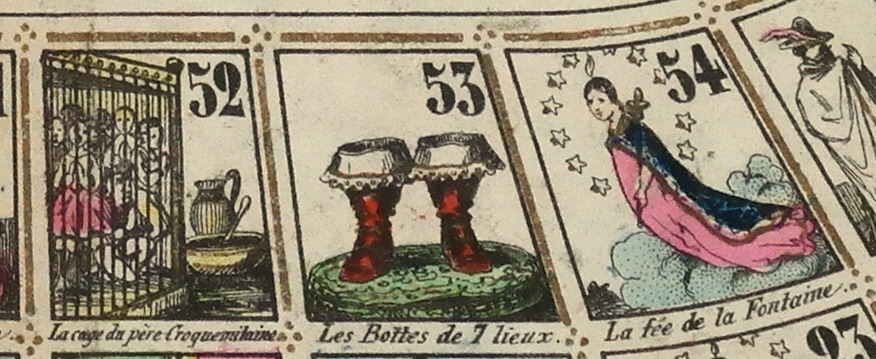 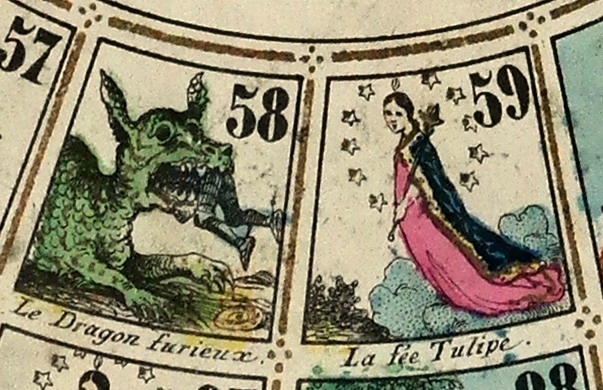 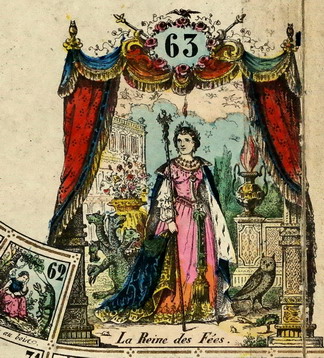 |
primo autore: | Non indicato |
| secondo autore: | Gangel-Gangel&Dembour-Gangel&Didion-Gangel et Didion-Gangel & P. Didion | |
| anno: | 1860 | |
| luogo: |
Francia-Metz |
|
| periodo: | XIX secolo (3°/4) | |
| percorso: | Percorso di 63 caselle numerate | |
| materiale: | carta (paper) (papier) | |
| dimensioni: | 375X510 | |
| stampa: | Stampa su legno colorata in maschera (bois gravé et colorié) (woodcut) | |
| luogo acquisto: | ||
| data acquisto: | 10-07-2000 | |
| dimensioni confezione: | ||
| numero caselle: | 63 | |
| categoria: | Letteratura scritta e disegnata, Belle Arti | |
| tipo di gioco: | Gioco oca variante | |
| editore: | Gangel et P.Didion à Metz | |
| stampatore: | Gangel et P.Didion à Metz | |
| proprietario: | Collezione A. Seville | |
| autore delle foto: | A. Seville | |
| numero di catalogo: | 311 | |
| descrizione: |
Gioco di 63 caselle numerate, spirale, antiorario, centripeto. Ristampato modificato da Jarville a Nancy. Agli angoli: "L'Aimable Migennet (Dans Chatte Blanche)"; "Le géant Galifron. (Dans la Belle aux cheveux d'Or)"; "La Fée Carabosse. (Dans M.t et M.me Tartine)"; "La métamorphose. (Dans le Prince Cheri). Le classiche caselle delle oche sono sostituite da fatine. REGOLE: al centro. CASELLE: (con didascalia). Cas. 1): L'oiseau bleu; Cas. 2): La Belle aux Cheveux d'Or; Cas. 3): Chatte Blanche; Cas. 4): La bonne petite Souris; Cas. 5): La Fée Soussio; Cas. 6): Ogresse; Cas. 7): Finette Cendron; Cas. 8): Belote et Laidronnette; Cas. 9): La Fée Cancaline; Cas. 10): Le petit Poucet; Cas. 11): Barbe Bleu; Cas. 12): Ogre; Cas. 13): Le Petit Chaperon rouge; Cas. 14): La Fée Diamantine; Cas. 15): Le Chatte Botté; Cas. 16): Cendrillon; Cas. 17): Les fées; Cas. 18): La Fée Furie; Cas. 19): Chateau Mysterieux; Cas. 20): Riquet à la Houppe; Cas. 21): La Belle au bois dormant; Cas. 22): Peau d'Ane; Cas. 23): La Fée aux Roses; Cas. 24): L'Adroite Princesse; Cas. 25): Les souhaits ridicules; Cas. 26): Magicien; Cas. 27): La Fée Grenade; Cas. 28): Griselidis; Cas. 29): Le prince Charmant; Cas. 30): Le prince Fatal et le prince Fortuné; Cas. 31): Le bouclier enchanteur; Cas. 32): La Fée violente; Cas. 33): La belle et la Bete; Cas. 34): La veuve et ses 2 filles; Cas. 35). Le prince Tity; Cas. 36): La Fée Merluche; Cas. 37): Aurore et Aimée; Cas. 38): Le bucheron et la bucheronne; Cas. 39): Le prince Cheri; Cas. 40): Le prince Désir; Cas. 41): La Fée des Lilas; Cas. 42): Jardin enchanté; Cas. 43): Joliette; Cas. 44): Le prince Roland; Cas. 45): La Fée Candide; Cas. 46): Le pecheur et le voyageur; Cas. 47): La bouteille d'eau; Cas. 48): Le prince Spirituel; Cas. 49): Philemon et Baucis; Cas. 50): La Fée aux Logues Cas. 51): La mechante femme; Cas. 52): La cage du père Croquemitaine; Cas. 53): Les bottes de 7 lieux; Cas. 54): La Fée de la Fontaine; Cas. 55): Les Revenants; Cas. 56): Le petit chien; Cas. 57): Le prince Emeraude; Cas. 58): Le Dragon furieux; Cas. 59): La Fée Tulipe; Cas. 60): Le Loup bleu; Cas. 61): La princesse à marier; Cas. 62): La biche au bois; Cas. 63): La Reine des Fées. NOTA: L'esemplare non riporta indicazioni dello stampatore. Altro esemplare (Collezione Seville) con indicazione: "Imagerie de P. DIDION à METZ - DELHALT successeur". Vedi anche versione olandese (Arch. N°855). REFERENZA 1 (D'Allemagne, pag. 212): "Jeu des Contes de Fées". Metz, Gangel et Didion (v.1860). Bois gravé et colorié. 37,5x51. Au centre: la Reine des Fées. Meme jeu, Nancy, Jarville (Réimp.)." REFERENZA 2 Game 19: Game of Fairy Tales Jeu des Contes des Fées. Metz: Imagerie de P. Didion, successeur Delhalt, [c. 1860, this a later 19th c. reprint]. Wood engraving with original stencil color, 38 x 51 cm., laid on a two-panel folding board, 44 x 55 cm. Refs.: Seville/Ciompi 0311; D’Allemagne, p. 212. This game is an example of provincial French production: Metz, in the Lorraine region, is close to the northeastern border of France. Lorraine was a major source of imagerie populaire in the 19th century, the most notable producer being Pellerin in Epinal, who was producing jeux de l’oie as early as 1820. Other centers were Nancy and Pont-à-Mousson. Copper engraving was not used, the transition being from woodblock to lithography or zincography. Generally, the standards of production decreased over the years. The 63 spaces are filled with characters from fairy tales: the Blue Bird, the Beauty with Golden Hair, the White Cat, and so on. Fairies take the place of the geese in the classic two-track series beginning on spaces 5 and 9 respectively. The hazard spaces are interpreted with some wit. Instead of the usual bridge at space 6, there is an ogress and the player must go to space 12 (the usual rule) to be crunched up by the ogre. The death space at 58 shows a dragon devouring a knight (begin again!). Unusually, there is a witty treatment of the initial throw of nine: a magician takes the player to space 26 on throwing 6, 3 whereas it takes Seven League Boots to get one to space 53 on throwing 5, 4. (Adrian Seville) Exhibitions: - "The Royal Game of the Goose four hundred years of printed Board Games". Exhibition at the Grolier Club, February 23 - May 14, 2016 (Prof. Adrian Seville). |
|
| bibliografia: |
1) ALLEMAGNE, Henry-René D’: "Le noble jeu de l’oie en France, de 1640 à 1950", Ed. Grund, Parigi 1950. 2) BUIJNSTERS, P.J. - BUIJNSTERS-SMETS, Leontine: "PAPERTOYS. Speelprenten en papieren speelgoed in Nederland (1640-1920)". Waanders Uitgevers-Zwolle, 2005. 3) DOMINI, Donatino: "Giochi a stampa in Europa dal XVII al XIX secolo" Longo Editore Ravenna, 1985 4) SEVILLE, Adrian: "L'arte dei giochi da tavolo. Oltre un secolo di storia e divertimento dalla fine del Settecento all'inizio del Novecento." Edizioni White Star, 2019. |
|
Vai alla ricerca giochi Vai all'elenco autori